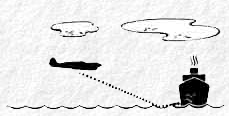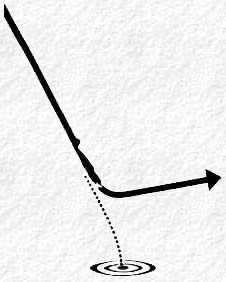|
This airplane is equipped to carry one bomb under each wing, plus one bomb in the belly tank position. To arm the bombs, put the bomb arming handle on the floor below the throttle quadrant in the ARM position. To release the bombs, there are manual release handles on the left side of the cockpit. Auxiliary gas tanks may be carried in place of the bombs under each wing and fuselage. These tanks range in capacity from 52 to 150 gallons. The needs of war have forced the P-40 into all sorts of bombing techniques. Often the P-40 has doubled as a light bomber or an attack plane. It has carried bombs up to 1000 lbs. But ordinarily, the P-40 is used for two types of bombing-dive bombing and minimum-altitude bombing.  Minimum-altitude or skip bombing is the most accurate kind that can be done with a fighter. Although this type of bombing has been performed from levels of only a few feet, you should not go below 50 feet for training purposes. Many unorthodox techniques and many rules you won't find in any book have been successful in minimum-altitude bombing in combat, so it is not the kind of thing that you can describe with a series of set principles. There are, however, these basic rules: 1. You should maintain a straight and level approach for at least 5 seconds before the bomb is released. 2. Try to undershoot the target, because undershooting allows the bomb to skip into its target. |
3. Always use delayed action bombs. They give the airplane time to get out of danger before the explosion, and they delay the explosion until the bomb can skip into the target.  In dive bombing you arm your bombs just before beginning the approach. Come over the target at 4500 feet, pull up and slow the airplane to 150 mph. Roll over and start your dive. Be sure the airplane is properly trimmed for high speed so that it won't be necessary to use much left rudder. Don't dive faster than 350 mph IAS. Put the bead of your gunsight on the center of the target as you dive. The angle of the dive should not be greater than 70' or smaller than 45'. Just as you start the pullout, release the bomb. While in training, pull out at 2000 feet above the earth-never less than 1000 feet. Don't horse back on the stick during the pullout because you might get into a high-speed stall. |


